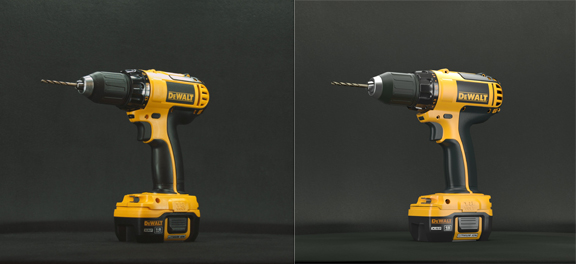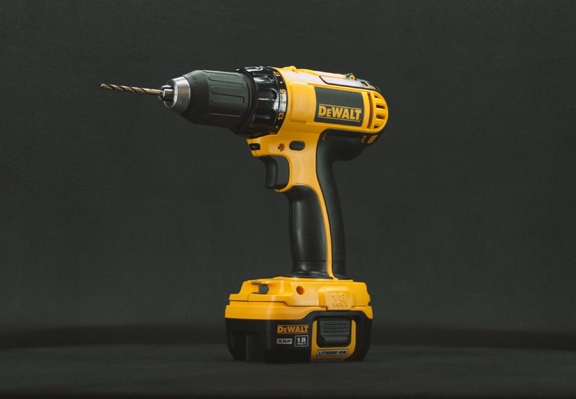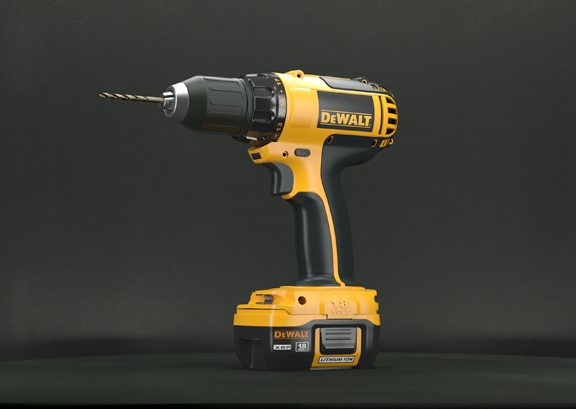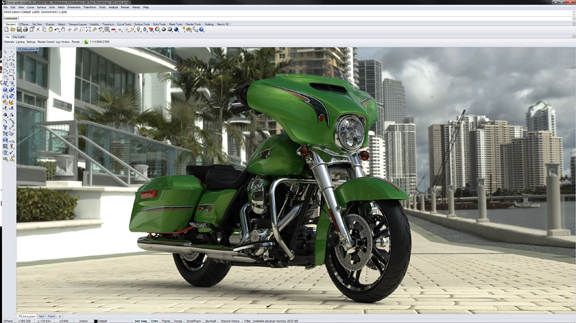
NVIDIA showcases its photo-realistic rendering with a side-by-side comparison. One is digital, one is a photo. Can you tell which one?
Latest News
August 21, 2015
 NVIDIA showcases its ray-traced rendering technology with an image comparison. One is digital, one is a photo. Can you tell which one?
NVIDIA showcases its ray-traced rendering technology with an image comparison. One is digital, one is a photo. Can you tell which one? NVIDIA showcases its ray-traced rendering technology with an image comparison. One is digital, one is a photo. Can you tell which one?
NVIDIA showcases its ray-traced rendering technology with an image comparison. One is digital, one is a photo. Can you tell which one?At NVIDIA‘s pre-Siggraph press briefing, the concept of a digital twin takes on new meaning. At the reception in the J.W Marriott hotel in downtown LA, Dr. Steven Parker, NVIDIA’s VP of professional graphics, stood before what appeared to be a pair of images of the same object, 18-volt DeWalt power drill.
“You see two images. One of them is real; one is rendered. Up close and personal at 10-foot-tall, you might be able to tell, you might not,” Parker said. The point of the side-by-side comparison of the photo and the rendered image, he explained, is not to fool the audience, but to show how faithful ray-tracing can be to reality. It gives you assurance that “if you design and expect a product to look [a certain way], you will not be surprised by what it looks like when it’s finished,” he said.
The digital image is modeled in Autodesk 3dx Max software, rendered in NVIDIA iray on a Windows workstation powered by Quadro M6000 GPUs, according to NVIDIA’s blog post. (Rendering experts picked out the digital image from the impossibly perfect details of the computer-generated image. An online blog reader noted, “There’s some random patterns in the [top one], some translucent colors in the screw holes, and the 3D one [bottom one] is too perfect—pieces fits perfectly with no gaps or irregularity.”)
Parker was promoting the notion that “rendering cannot be an afterthought. It’s something that must be integrated into the design process.”
With the stage set, he introduced NVIDIA DesignWorks. He described it as “a suite of libraries, algorithms, and tools to bring this capability to your software. It includes our best technology for rendering, material, display, and virtual reality. This is the software we use to build our own products.”
 2015 Harley-Davidson Street Glide rendered in iray for Rhino. Production data courtesy of Harley-Davidson Motor Company
2015 Harley-Davidson Street Glide rendered in iray for Rhino. Production data courtesy of Harley-Davidson Motor CompanyOn the product’s home page, NVIDIA said DesignWorks is “designed specifically for developers creating professional graphics and advanced rendering applications.” The collection includes “NVIDIA OptiX for building ray-tracing applications, NVIDIA Material Definition Language (MDL) for sharing materials between applications, and more than 20 other tools for creating, visualizing and sharing digital designs.”
NVIDIA offers a similar suite for software developers catering the media and entertainment market. The company released NVIDIA GameWorks in March 2014.
For CAD developers, DesignWorks components like iray SDK, MDL SDK, and vMaterials library offer a chance to bolster the real-time visualization and realistic depiction of manufacturing materials in their modelers. Dassault Systemes and Autodesk are among software developers that have integrated some of the technologies featured in DesignWorks.
DesignWorks VR, a comparatively new offering, anticipates a market for virtual reality-driven design, an area that remains speculative and limited for the present. A segment of the large automotive manufacturers, well-funded research firms, and government agencies deploy such technologies in immersive CAVE environments. But for mainstream 3D software makers, the amount of effort required to integrate gesture-based modeling and stereoscope visuals represents a barrier.
Parker observed, “Gaming, visual effects, and design are all in the midst of a revolution—it has to do with physically based rendering.”
To spare the CPU of the compute burden, CAD software packages traditionally display complex assembly models in bright, exaggerated colors that are easy to render but highly unrealistic. (Parker noted, “We affectionately call them clown colors.”)
However, the prevalence of GPUs and multi-core CPUs in modern workstations puts more compute capacity at the users’ disposal. The technologies bundled in NVIDIA DesignWorks suggest a change is coming. Design software of the near future might display 3D models in ray-traced mode by default.
Subscribe to our FREE magazine, FREE email newsletters or both!
Latest News
About the Author
Kenneth Wong is Digital Engineering’s resident blogger and senior editor. Email him at [email protected] or share your thoughts on this article at digitaleng.news/facebook.
Follow DE





